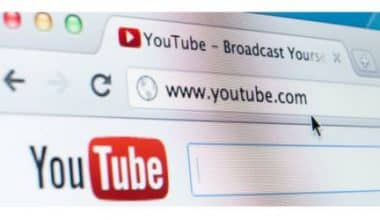In spite of the fact that there are many other possibilities, email is still regarded as the most trustworthy and official way of communication. Email is available to everyone, unlike chat programs and social media sites. As a result, email has become one of the most popular business communication methods. The reader can grasp what you are attempting to convey and the information they need to respond in a well-written email with a clear structure. Even though email writing is an art, with enough effort, it can be mastered. The following is some of the best guidance on How to Write an Email Formal, an Official Email, an Email to a Professional, and an Email Resignation the ones that the receiver doesn’t miss among the crowd.:
How to Write an Email
Would you like to learn how to write an email? Do you need guidance on where to put what and why? Here, we’ll go over all you need to know about how to write an email effectively, whether you’re sending your first email or just want to review what you already know. Understanding how to write a basic email be it formal or informal is easy and will help you create more complex emails because every email you ever write will have the same structure and require you to manage each of these components.
- To, CC, BCC
- Attachments
- Subject Line
- Greeting
- Body
- Sign off
In order to better grasp what constitutes a successful email, we are going to look deeply into each of these components.
#1. To, CC, BCC
You should enter the email addresses of the individuals you wish to contact in these areas, which are located at the top of your email. Each serves a particular purpose:
| TO | The email address(es) of your main contact should be added here. |
| CC | If you want someone to view the message but you don’t require a response, use this in conjunction with “To” and email addresses in this field. |
| BCC | If you want to send an email to several people but need to keep their email addresses confidential, use this in conjunction with “To”. |
#2. Attachments
Emails’ attachment function allows senders to include supplementary files that recipients may click on to download or see inline however Most file types will allow you to upload text, photos, videos, audio, and GIFs also Keep in mind that there are usually limits on the size of the files you can transfer.
#3. Subject Line
Your email’s subject line, which summarizes its purpose and contents, is crucial. Unfortunately, they are frequently disregarded, which is unfortunate because they aid the recipient in understanding the content of your email and prevent it from getting deleted.
#4. Greeting
Your email should always begin with a salutation. It is crucial to learn how to write an email introduction and greeting since it enables you to be courteous and inform the recipient of the message’s purpose.
A formal salutation is necessary for formal emails, such as those used for job applications or sales correspondence. A more relaxed welcome is frequently acceptable in private emails or interactions between close coworkers.
#5. Body
Of course, the most crucial aspect of an email is its content. The ideal email body should be concise, well-organized, targeted, and serve a specific purpose.
Keep in mind that readers will lose interest and attention if your email isn’t brief and to the point, and that storytelling elements aren’t encouraged in emails.
Always begin your email with a clear statement about its subject and arrange your material so that it is easy to find.
#6. Sign off
Making sure you use the right closure for your intended recipient is just as crucial as making sure your emails are begun properly. They will be aware when the email has been dispatched and is finished as a result.
Make a special closing for each correspondence, and when in doubt about how to sign off, err on the side of formality
How to Write an Email Formal
You might not be able to write a professional email effectively if you’re used to sending informal emails to friends and relatives. Many people find it challenging to write a formal email.
To write a formal email, one must use formal language and a predetermined structure to initiate or continue a discussion about a serious or significant issue. In order to show respect, people also write formal email while communicating with strangers. By default, corporate settings and communications use formal emails to ensure employees’ messages accurately reflect their firm. If you want to write a formal email that seems professional, you should follow these steps:
#1. Ensure That Your Email Address Is Correct
Write a business email address whenever you send a formal email. Your place of employment or study may generate a professional email address for you, or you may construct a personal email address with a few other symbols, numbers, and elements of your name. Especially if they don’t know you, the recipient can be reluctant to open emails from any unknown or unprofessional senders. An expert email address improves the impact of your correspondence.
#2. Include a Topic Line.
what you write in The subject line of your formal email makes it clear what the message is about. It should be written in the title case and be as brief as possible to appear professional. If including your name in the subject line will help the receiver sort through or respond to the email, feel free to do so.
#3. Formalize Your Introduction.
In the body of your email, you should begin with a polite salutation. After the title or honorific, include the recipient’s last name. The formal salutations below can be used:
Dear
Hello
Greetings
If the name of the receiver is not obvious, please state “to whom it may concern”
#4. Introduce Yourself
If you’ve never spoken to the receiver before, introduce yourself in the first line. Describe how you relate to or are relevant to the recipient after introducing yourself. A business owner would want to know if you are a potential customer or an employee of another company, just as a professor might want to know if you are a student or a member of the faculty. Finish your introduction with a succinct sentence that summarizes your motivation for writing.
#5. Explain What You’re Attempting To Say.
More details regarding your writing goals are provided in your next paragraph. Be more specific about who you are and what you want to accomplish in your email. This part should contain any administrative details relevant to your communication, such as a deadline. There should only be one or two paragraphs in this area.
#6. End With a Thank You.
In your final statement, you thank the reader for reading and understanding your point. It concludes by noting the subsequent conversation you plan to have with the receiver. You can decide whether to wait for their response or arrange a face-to-face meeting. Before signing your name and, if appropriate, including the contact information for your company, use a professional closing. Examples of proper formal closings include the following:
- Regards
- Best
- Sincerely
- Yours
- Respectfully
- With respect
#7. Send Your Email After Proofreading It for Errors.
Remember to carefully reread your email before sending it. There shouldn’t be any spelling or grammar mistakes in your writing. Use a free online proofreading tool to scan your writing to ensure that it is accurate. You benefit from fixing any potential misunderstandings or awkward presentations, as well as any technical issues. You might be able to get the reaction you want by employing a well-written message.
How to Write an Email to a Professional
A well-written professional email conveys to the receiver a courteous, explicit, condensed, and actionable message. Developing your ability to write emails that follow all of these guidelines may take some time. When interacting in a formal setting, it’s essential to know how to write a clear, suitable professional email. Knowing how to write a professional email can:
- Save time.
- Give clarification
- Display competence
- Builds a person’s or company’s reputation
The following steps are guidelines on how to write an email to a professional
#1. Make Use of a Professional Email Address.
Write a professional email address for communications pertaining to business or official matters. Even though your employer will give you one, you should still write a professional email address if you are contacting someone prior to joining the organization. The usual format for this is simply your name at [the domain]. As an illustration
- Yourfullname@thedomain
- First name.lastname@thedomain
- First name middle initial.lastname@thedomain
#2. Create a Subject Line That Is Brief and Informative.
This concise sentence encapsulates the key elements of your email or connection. When you write a professional email, it is essential to include a subject line so that the recipient’s audience knows what to anticipate and can quickly find the message again if necessary. In your upcoming business emails, think about utilizing one of the following subject lines:
- No more than 60 characters should be used.
- In one sentence, define the email’s goal clearly.
- Start by mentioning the receiver by name.
#3. Send the Recipient an Official Greeting
The salutation in an email normally begins in the first line. This welcome message should be prepared in a formal tone to fit the email you are sending. Depending on your relationship with the person, your greeting may alter.
- When writing to someone you haven’t met or with whom you have a formal business relationship, such as a hiring manager or a new client, you might begin your letter with “Dear.”
- You can introduce yourself by saying “Hello” or “Hi” to a manager or coworker with whom you get along well at work.
Examples
- Hi Mr. Greg,
- Hello Alfred,
- Dear Dr. Smith
- Dear colleagues,
If you are aware of the recipient’s chosen gender pronouns, it is polite to address them as “Mr.” or “Ms.” and use their last name when writing business emails. Use the recipient’s full name if you are unclear about their gender pronouns.
#4. Create the Email’s Body.
This is where you’ll communicate your entire message, much like the body of a letter you may compose. No matter how brief and to the point it is, your email needs a call to action and a closing statement. As an example,
It was really appreciated that you came to this afternoon’s new product demonstration. You can show your staff the whole video by having them watch the sample supplied. In case you have any inquiries, do let me know.
#5. Emails Must Have a Signature and a Closing Sign-off.
Your signature should contain your name, position, and any other details pertinent to your chats. In the majority of email applications, you may set up a preset signature to show at the end of every email you send.
Closing words includes
- Thanks,
- Best,
- Sincerely
- Rega
- Kind regards,
An example of how to end an email is provided below:
Sincerely
Jiana Smith, a marketing manager, Pedro Company, LTD.
#6. Check Your Email for Inaccuracies.
Professionalism and attention to detail are displayed in a flawless email. Take a moment to proofread your email for syntax, grammatical, and spelling mistakes before sending it. Verify that all files and attachments that you may have mentioned in your email have also been included.
Once you’ve finished editing your email from the recipient’s perspective, read it again. By doing this, you might be able to fix any errors that you committed while writing or revising in a previous stage.
Ask your immediate supervisor or a dependable coworker to examine any crucial emails you are sending to key stakeholders before you send them.
#7. Pay Attention to the Recipient Fields.
Verify the recipient fields in your email to make sure you are sending it to the right person, the person(s), or the group(s). Also, be sure to put the email addresses in the right position. Remember:
To:
email address of the individual or group to whom your message will be sent.
CC:
stands for a “carbon copy.” Any address entered here will get the same email without a personalized message.
BCC:
Similar to “CC,” the email address(es) in this field is hidden.
#8. Send Your Email According to the Schedule.
Occasionally, you might send an email before or after work. By scheduling your emails, you can more effectively manage your time and make sure that they are sent at a time that is convenient for the recipient. Every email program has a scheduling feature.
#9. Keep in Mind to Follow Up.
Not least of all, considering that the majority of people receive multiple emails each day, it’s likely that they will overlook or forget to respond to your letter. If the recipient hasn’t replied after two business days, think about sending a considerate follow-up email.
How to Write an Email Resignation
Even though it could seem challenging to write and send a resignation email, with the correct template, it might be simple. It is typically advisable to write an email of resignation when you want to quit your job because it gives you a chance to express gratitude to your employer for the opportunity. An email of resignation write-up is a terrific way to maintain contact with your former company, which is crucial if you want to get references in the future.
It’s easy to write a resignation email, and doing so may even be therapeutic. You can use it to bid farewell to your present employer and usher in the next stage of your career.
A resignation email is one that you write to your current employer alerting them that you are quitting certain employment.
Use the instructions below to help you write an email resignation letter:
#1. Select a Relevant Subject Line.
you can write Your email resignation letter by selecting a suitable subject line that clearly states your message. This is significant since an email reader might only read the subject line. Take into account utilizing a subject line that reads, “Notice of resignation” or “Resignation as of [date].”
#2. Start off with a professional greeting.
Setting a professional tone for the rest of the email with a formal salutation would help. Add a salutation like “Dear,” your supervisor’s title, and your last name after that. Think about including a simple phrase wishing everyone well. You might utter phrases like, “I hope you’re doing well” or “I hope you’re having a good day,” for instance.
#3. Give Your Email a Clear Purpose.
In the phrase after, be sure to make clear the email’s goal. Mention the job you are quitting. As an example, you could say, “The purpose of this email is to inform you of my formal resignation as a graphic designer.” This enables a potential employer to rapidly understand your message and respond appropriately.
#4. Think About Stating Your Departure Reason
If it makes you feel better, you might give a reason for your resignation. Say, for instance, that you need to move on because your career has changed. It’s important to avoid going into too much detail and to make your explanation for leaving, such as your health, positive and succinct. You are under no obligation to notify your employer of your intention to resign; your decision to do so is entirely up to you.
#5. Date the End of Your Employment
Mention the day you last had a job in your email. Give your employer as much notice as you can of your resignation. This may help you maintain good business relations with your former employer. Many businesses demand that employees give at least two weeks’ notice before leaving their positions. Look into the company’s guidelines to make sure you are abiding by the resignation requirements. An employer will be in a better position to comprehend your timeline and make the necessary arrangements as a result.
#6. Describe How Grateful You Are for the Chance.
Use this chance to express your gratitude to the business for the time you spent working there in your email. If you do this, you might be able to keep up a good relationship with them and make a good impression. Briefly thank the recipient for their time on the job to close your email.
You might also talk about the things you learned from playing the part and the best parts of working with the organization. Say, for instance, “I want to thank you for the opportunity to work as a nursing assistant, as I learned many valuable skills in patient care and medical treatment during my employment.”
#7. Offer Assistance for the Transition
You could acknowledge the strain your absence might place on the business and offer to help in whatsoever you can. Consider suggesting an internal candidate to take your job or volunteering to mentor the new hire before you leave the company and start your new career. This can demonstrate to a potential employer that you are still concerned about their business and its success.
#8. Look for Typos in Your Email.
to write a resignation email that is error-free is essential. Make sure your email is error-free with regard to spelling and punctuation. Additionally, make sure to write the email in a confident and appropriate tone. Before sending the email to your organization, think about having a friend or family member read it and verify its validity. By reading your email out loud or utilizing a digital writing tool, you can check for potential mistakes.
How Do You Start Writing an Email?
In a formal email, you should begin with a salutation and the recipient’s name and title.
What Are the 5 Steps of Writing an Email?
- Specify Your Topic.
- Consider the Recipient
- Make lists
- Develop Your Call to Action.
- Create your subject line.
How Do I Send an Email from My Mobile?
- The Android app for Gmail should be opened.
- Hit the compose button.
- Pick a recipient.
- To facilitate easy reference and clarity, choose an email subject.
- Put your message together.
- To send the message, tap the icon for a paper airplane.
What Is the Format of Email Writing?
- The subject line
- Greeting
- Body,
- Closing line
- Signature.
What Are the 7 CS of Email Writing?
They are:
- Clarity
- Correctness
- Conciseness
- Courtesy
- Concreteness
- Consideration
- completeness.
How Do I Write an Email in Gmail?
- Open Gmail.
- Click compose
- Enter the email address of the other person.
- Enter a subject.
- compose a message via email
- If required, format the text of your email.
- if you’d like, provide a file.
- Click “Send.”
References
Related Articles
- EMPLOYEE RESIGNATION LETTER: Format, Examples & Guide
- HOW TO WRITE A RESIGNATION LETTER: What You Should Say and Not Say
- EMPLOYEE APPRECIATION: Top 20+ Ideas, Gift, Messages & Quotes
- LETTER OF EMPLOYMENT: Meaning, How to Write It & 20+ Free Samples.EMPLOYEE APPRECIATION: Top 20+ Ideas, Gift, Messages & Quotes






